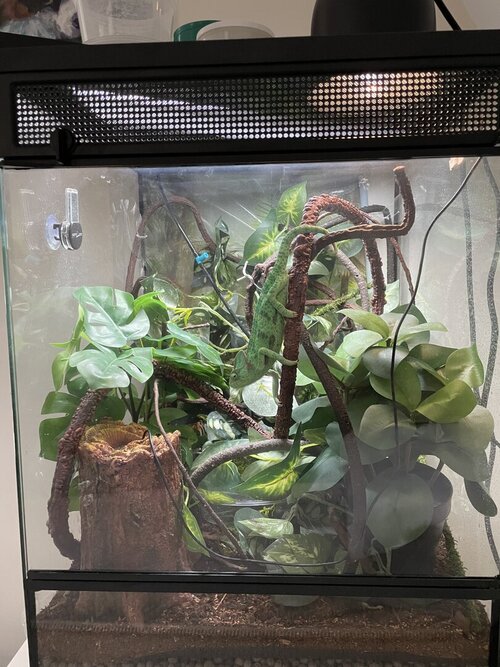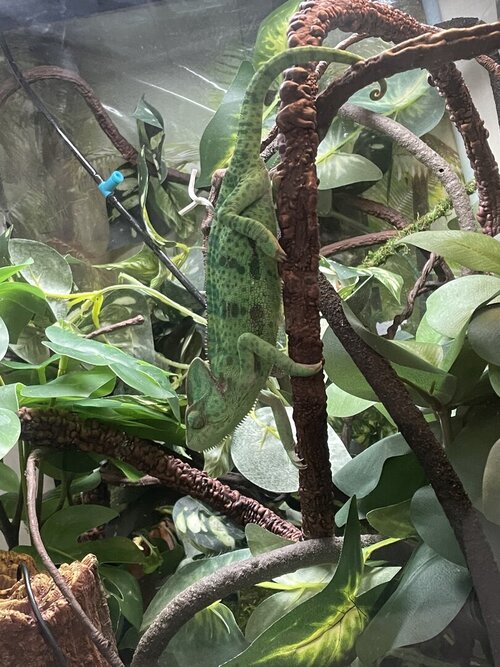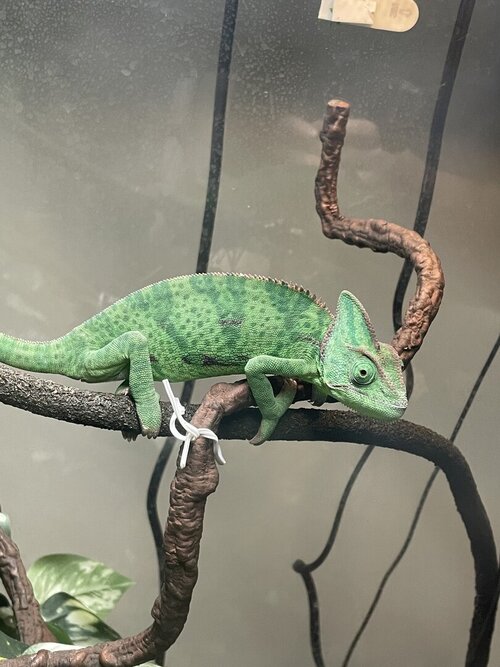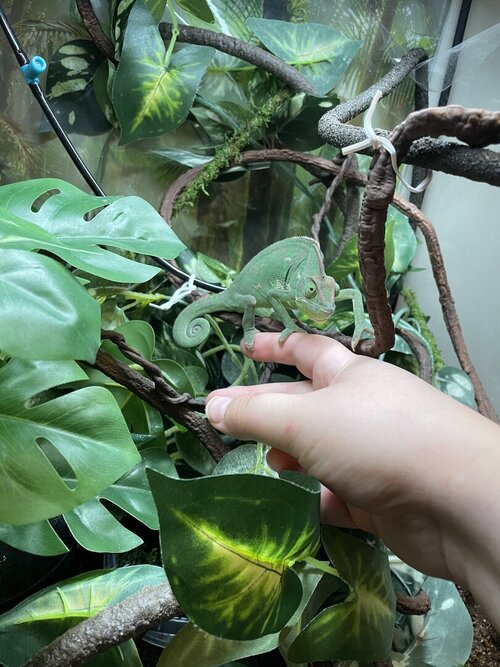awk___turtle
New Member
Hi!
Newbie chameleon owner here- I’ve had this female veiled chameleon for about 3 months now. A local large chain pet store was giving her away because she ourgrew their temporary housing and they could not sell her. She has settled in well and is growing like crazy! She has a voracious appetite and is quite sassy (I leave her be, I don’t handle her because I know it stresses her out). Over the last few days I’ve noticed that she is mostly this color pattern, which I know can be a sign of stress. However, nothing has changed in her environment that I can think of recently (other than I did adopt a parakeet, and she’s living in the same room). I tried moving the parakeet into a different room, but there was no change to her color pattern. She’s still eating great and very active. Just wondering if this is something I should be concerned about, or if I should just watch her for now?
Yes- I know a screened enclosure is the preferred method for housing chameleons. I have converted this enclosure to bioactive (springtails and isopods on the ground). I monitor her humidity and temperature very closely and everything sits at a good range (humidity 50-80% at night with misting, 40% during the day temperature- basking 82 degrees, cooler areas 76-78 degrees, nighttime temp 70 degrees) she has a T5H0 UVB bulb, a drip system, a fogger and is hand misted daily st night.
I am looking into getting a larger enclosure for her but at this time I just don’t have the space for one.
Diet - mostly crickets (10-20 small/medium) daily or every other day. Occasional Dubia roaches, wax worms, and hornworms (she never skips a meal and is quite the hunter!) insects are gut loaded 24 hours prior to feeding. Dusted with calcium without d3 at every feeding, and reptivite with D3 twice a month.
Any advice is helpful!
Newbie chameleon owner here- I’ve had this female veiled chameleon for about 3 months now. A local large chain pet store was giving her away because she ourgrew their temporary housing and they could not sell her. She has settled in well and is growing like crazy! She has a voracious appetite and is quite sassy (I leave her be, I don’t handle her because I know it stresses her out). Over the last few days I’ve noticed that she is mostly this color pattern, which I know can be a sign of stress. However, nothing has changed in her environment that I can think of recently (other than I did adopt a parakeet, and she’s living in the same room). I tried moving the parakeet into a different room, but there was no change to her color pattern. She’s still eating great and very active. Just wondering if this is something I should be concerned about, or if I should just watch her for now?
Yes- I know a screened enclosure is the preferred method for housing chameleons. I have converted this enclosure to bioactive (springtails and isopods on the ground). I monitor her humidity and temperature very closely and everything sits at a good range (humidity 50-80% at night with misting, 40% during the day temperature- basking 82 degrees, cooler areas 76-78 degrees, nighttime temp 70 degrees) she has a T5H0 UVB bulb, a drip system, a fogger and is hand misted daily st night.
I am looking into getting a larger enclosure for her but at this time I just don’t have the space for one.
Diet - mostly crickets (10-20 small/medium) daily or every other day. Occasional Dubia roaches, wax worms, and hornworms (she never skips a meal and is quite the hunter!) insects are gut loaded 24 hours prior to feeding. Dusted with calcium without d3 at every feeding, and reptivite with D3 twice a month.
Any advice is helpful!





